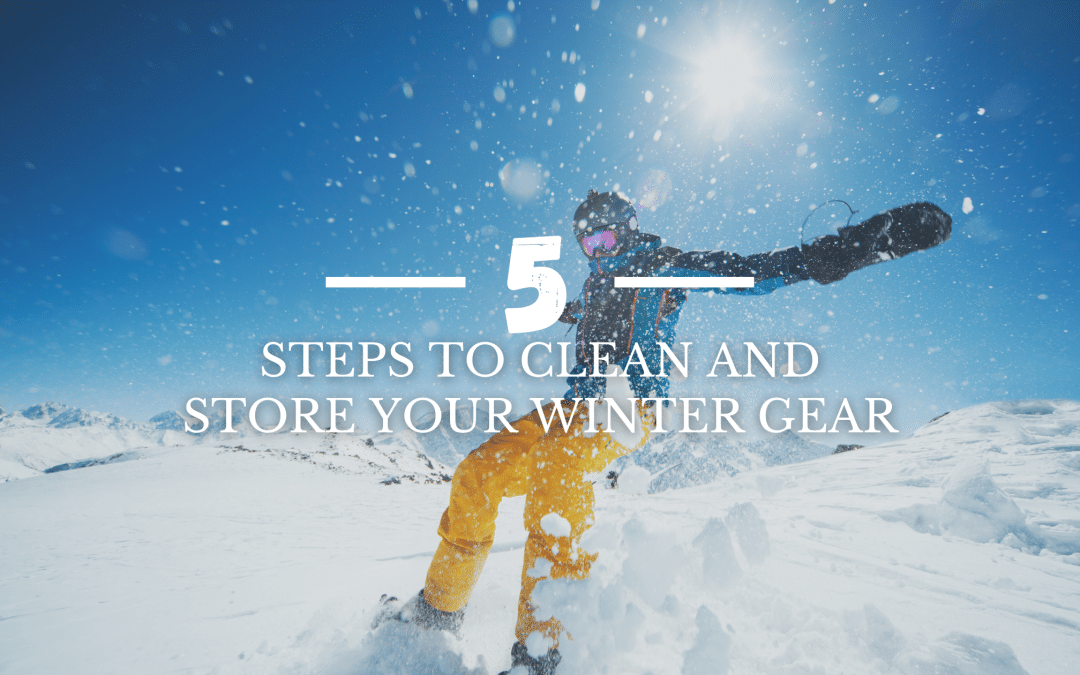5 Steps to Clean and Store Your Winter Gear
As the snow melts and warmer days approach, it’s time to pack away your winter gear until next season. Proper cleaning and storage are essential to maintain the quality and longevity of your gear. Follow these five steps to ensure your winter items stay in top shape for years to come.
1. Clean Your Gear Thoroughly
Before storing your winter equipment, make sure it’s clean and free from dirt, salt, and grime:
- Ski and Snowboard Equipment: Wipe down your skis, snowboards, and poles with a damp cloth to remove dirt and moisture. Check for damage or rust and apply a protective wax coat to the bases.
- Clothing: Wash jackets, pants, and base layers according to the care instructions. Use a specialized detergent for waterproof or down-filled items to preserve their functionality.
- Boots: Clean the exterior of your boots and remove the liners to wash separately. Allow them to air dry completely to prevent mold and odors.
- Accessories: Don’t forget gloves, hats, and goggles. Hand wash or spot-clean as needed and ensure everything is fully dry before storing.
Check out this video on how to Clean and Proof your jacket using Nikwax!
If you are in the market for a new winter jacket, we have you covered with our: Ultimate Guide to Choosing the Best Winter Jacket for Mountain Sports
2. Repair Any Damage
Addressing minor issues now can save you from costly repairs later:
- Clothing: Patch up small tears or holes in jackets and pants. Many outdoor brands sell repair kits specifically for technical gear.
- Equipment: Inspect bindings, edges, and screws on your skis or snowboard. Tighten loose screws and consider a professional tune-up if needed.
- Zippers: Lubricate zippers on clothing and gear bags to ensure smooth operation next season.
Our favorite way to patch/repair equipment is with NoSo patches. They are fun and ad character to any piece. Check out this video on how to apply them. (hint: we sell these in store)

3. Store in a Cool, Dry Place
The storage environment plays a crucial role in protecting your gear:
- Avoid Humidity: Moisture can cause mold, mildew, and rust. Use silica gel packs or a dehumidifier in your storage area to keep items dry.
- Temperature Control: Keep your gear in a stable, cool environment—avoid attics or garages that experience extreme temperature changes.
- Organize Gear: Use labeled bins or garment bags to keep items organized and protected from dust. Opt for breathable materials to allow airflow.
 4. Protect Against Pests
4. Protect Against Pests
Winter clothing, especially items with natural fibers like wool, can attract pests:
- Use Cedar or Lavender: Place cedar blocks or lavender sachets in storage bins to deter moths and insects.
- Vacuum-Sealed Bags: For long-term storage, consider vacuum-sealed bags for non-puffy items. Avoid using these for down jackets or sleeping bags, as compression can damage insulation.
- Regular Checks: Periodically check stored gear to ensure no pests have infiltrated.

5. Maintain Proper Organization
Good organization saves time and frustration when winter rolls around again:
- Create an Inventory: Make a list of all your stored gear. Note any repairs or replacements needed so you can plan ahead.
- Label Storage Containers: Clearly label bins or bags with their contents for easy access.
- Group Similar Items: Store related items together, like skiing accessories in one bin and outerwear in another, to streamline packing for your next winter outing.
Conclusion
Cleaning and storing your winter gear properly is an investment in its performance and longevity. By following these 5 steps to clean and store your winter gear, you can ensure your equipment and clothing remain in excellent condition, ready to tackle the slopes or trails next winter. Take the time now to pack away your gear with care, and you’ll thank yourself when the snow returns!



